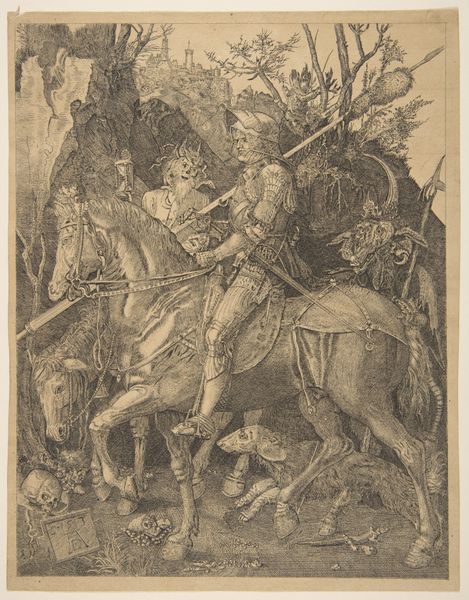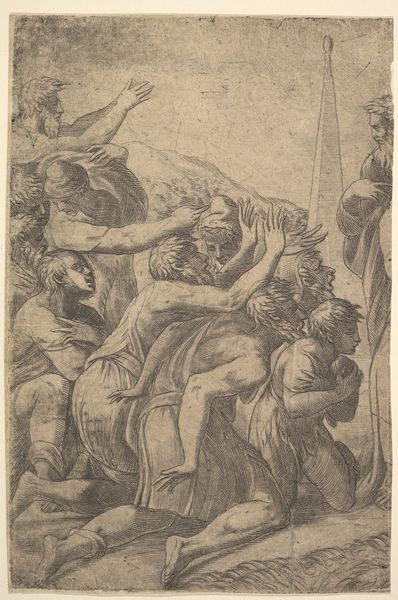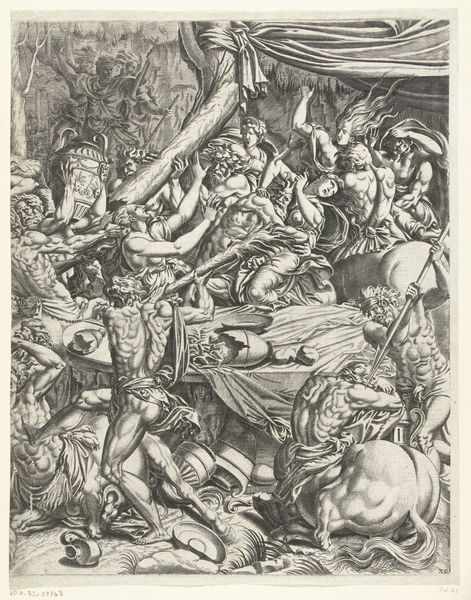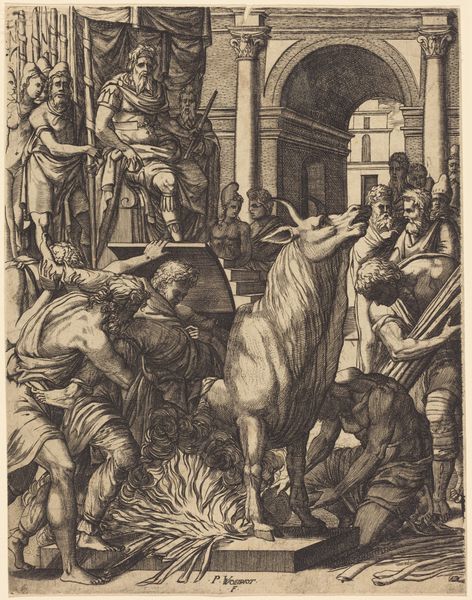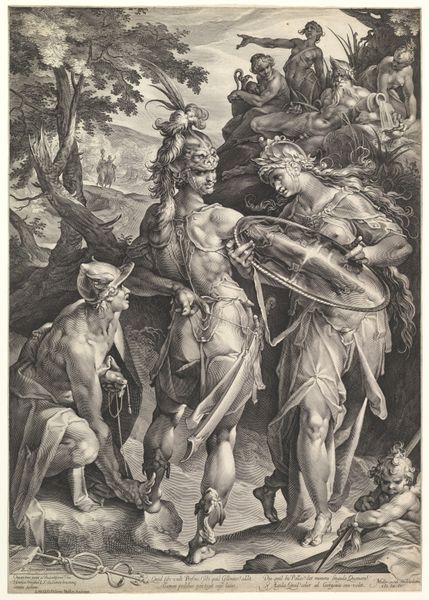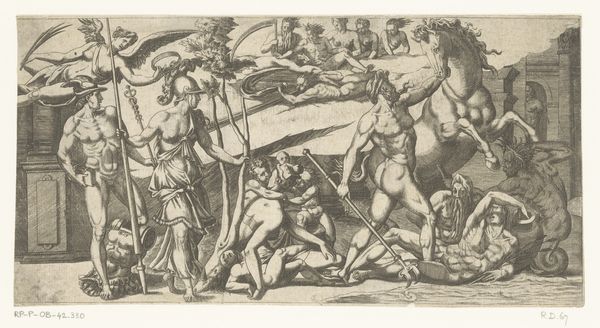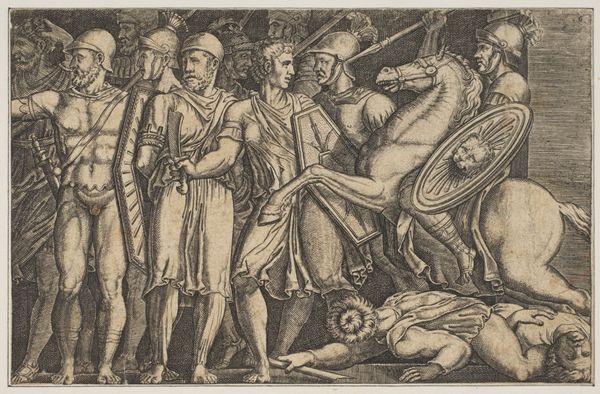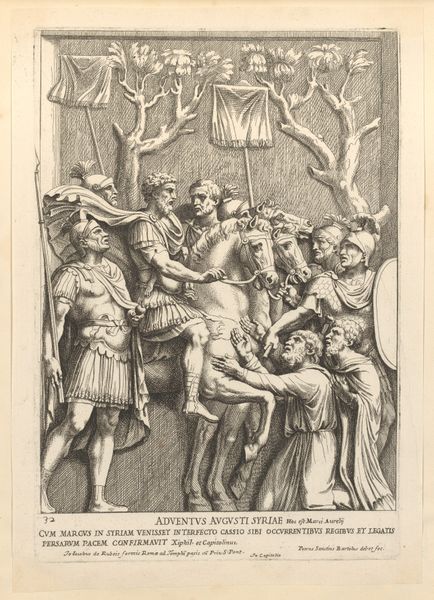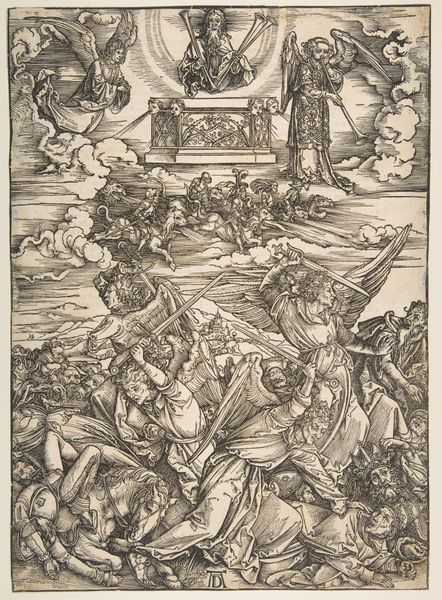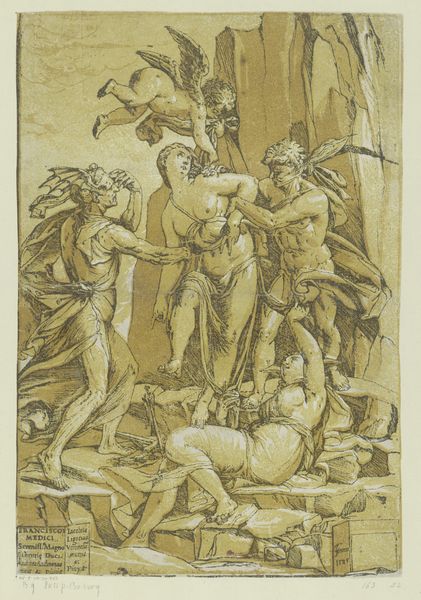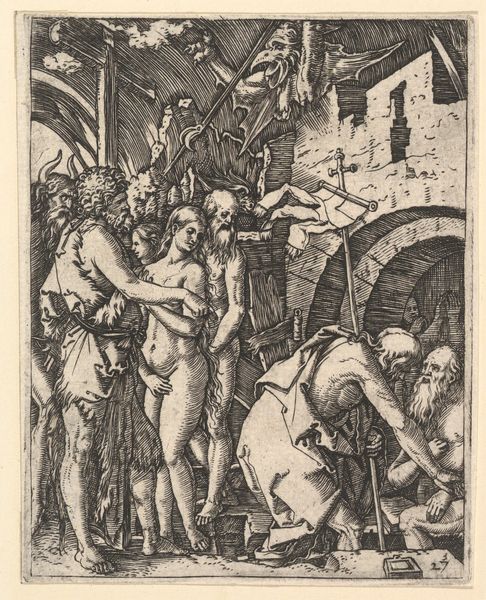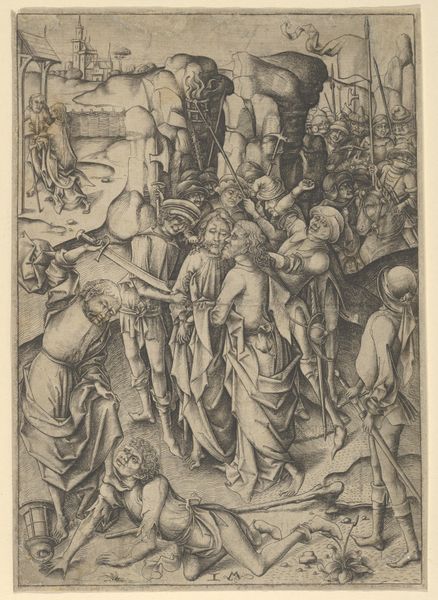
Hagen Leaves Siegfried's Body to be Carried Home from the Forest n.d.
0:00
0:00
drawing, print, etching, paper, ink
#
drawing
#
ink drawing
#
narrative-art
# print
#
etching
#
figuration
#
paper
#
ink
#
romanticism
#
history-painting
Dimensions: 125 × 82 mm
Copyright: Public Domain
Editor: So here we have a rather dramatic print called "Hagen Leaves Siegfried's Body to be Carried Home from the Forest," etched by Julius Schnorr von Carolsfeld. It's all done in ink on paper, and it's just… intense. I get a feeling of profound loss and maybe even betrayal. It's so busy, though; where do I even begin to unpack this? What stands out to you? Curator: You know, it's interesting you pick up on the "busy-ness" first. My eyes are drawn immediately to the weight of the figures bearing Siegfried’s body, their physical strain rendered in stark detail, practically pushing them off the page. But it’s not just physical burden. There’s a real emotional weight etched – quite literally! – onto their faces. Do you feel any connection to German Romanticism here? Editor: I do! There's a definite flair for dramatic storytelling, that heightened emotion I associate with Romanticism. The detail feels almost overwhelming, a very heightened drama, really leaning into the emotional toll. Curator: Precisely! And remember, this is pulled from the *Nibelungenlied*, a foundational German epic. This isn't just history; it's *cultural* history. Consider the way the forest looms—both a backdrop and a character— almost a constricting presence. What do you suppose Schnorr von Carolsfeld might be trying to convey with such stark, high contrast mark making in his print, like these dense thickets surrounding this death scene? Editor: It's as if the forest itself is complicit in the tragedy, another oppressive force surrounding them and looming towards the central body being carried. It's incredibly effective at creating this heavy, inescapable atmosphere. I never thought about the forest being another character in this. Curator: It’s about more than just telling the story, isn't it? It’s about tapping into a deep well of national myth. About the way we reckon with death and duty and perhaps most significantly—mourning, a critical subject during German Romanticism. Editor: I can see how focusing on mourning highlights the emotional intensity so prominent in this piece. Thanks! I'm viewing it in a completely different light now, thinking about those cultural connections and the almost claustrophobic feeling of loss.
Comments
No comments
Be the first to comment and join the conversation on the ultimate creative platform.
